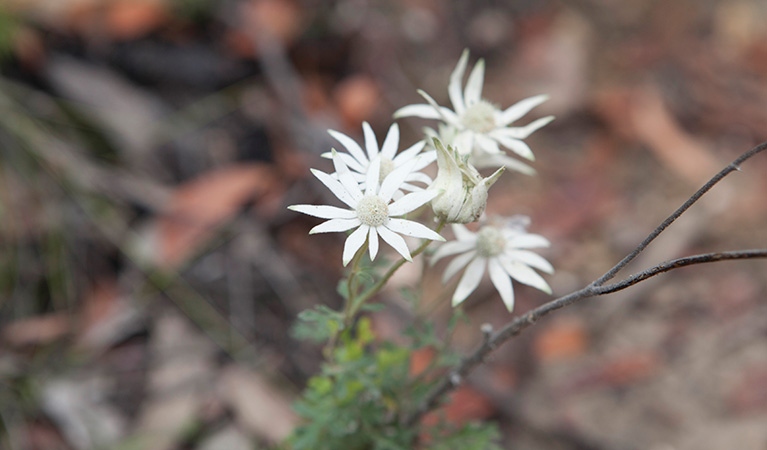Cattle Duffers Flat picnic area
Georges River National Park
Affected by closures, check current alerts
Learn more
Learn more about why this park is special
Cattle Duffers Flat picnic area is in Georges River National Park. Here are just some of the reasons why this park is special:
Ancient waterways

Georges River National Park is the traditional Country of the Dharug and Dharawal People and evidence of their long connection to this land, including shell middens, rock art and engravings, is evident throughout the park. The Georges River was an important transport route for Aboriginal people, linking Botany Bay to the inland areas. The park continues to be an important place for Aboriginal people today.
Free as a bird

The fact that over a hundred different bird species make the Yeramba Lagoon and its surrounds their home is reason enough for many a birder to visit Georges River National Park. Even if you're not a twitcher it's hard not to be impressed by the list of winged wonders that reside here; from endangered pink robins and powerful owls to superb fairy wrens with vivid blue feathers or the more commonly sighted laughing kookaburra. There's also a great diversity of plant life around the lagoon, including impressive displays of banksia flowers.
- Ridge walking track Enjoy scenic views of the river along Ridge walking track - a short walk from Burrawang Beach to Cattle Duffers picnic area in Georges River National Park.
- Yeramba Lagoon loop track Georges River National Park is an easy daytrip from Sydney. Birdwatchers love the Yeramba Lagoon loop track – a short track with scenic views and lots of birdlife.
Riverside delight

The calm waters of Georges River offer a range of activities for visitors; including waterskiing, jetskiing and kayaking. Launch your boat at Morgans Creek, or head to Mill Creek if you have a canoe or kayak. The waters of Georges River are rich fishing grounds for keen anglers and there are lots of spots along the river to try your luck.
- Burrawang Reach picnic area Burrawang Reach picnic area is a popular spot for a picnic or barbecue. Set on the sandy shores of George’s River, you can fish and paddle nearby.
- Fitzpatrick Park Fitzpatrick Park picnic area at Picnic Point is a great place for a family barbecue not far from Sydney. Enjoy a barbecue, go fishing or enjoy a spot of paddling.
Plants and animals protected in this park
Animals
-

Peron's tree frog (Litoria peroni)
Peron’s tree frog is found right across NSW. These tree-climbing and ground-dwelling Australian animals can quickly change colour, ranging from pale green-grey by day, to a reddish brown with emerald green flecks at night. The male frog has a drill-like call, which has been described as a 'maniacal cackle’.
Plants
-

Smooth-barked apple (Angophora costata)
Smooth-barked apple gums, also known as Sydney red gum or rusty gum trees, are Australian native plants found along the NSW coast, and in the Sydney basin and parts of Queensland. Growing to heights of 15-30m, the russet-coloured angophoras shed their bark in spring to reveal spectacular new salmon-coloured bark.
-

Black sheoak (Allocasuarina littoralis)
The black sheoak is one of a number of casuarina species found across the east coast of Australia and nearby tablelands. Growing to a height of 5-15m, these hardy Australian native plants can survive in poor or sandy soils. The barrel-shaped cone of the black sheoak grows to 10-30mm long.
-

Flannel flower (Actinotus helianthi)
The delicate flannel flower is so named because of the soft woolly feel of the plant. Growing in the NSW south coast region, extending to Narrabri in the Central West and up to south-east Queensland, its white or pink flowers bloom all year long, with an extra burst of colour in the spring.
Look out for...
Black sheoak
Allocasuarina littoralis

The black sheoak is one of a number of casuarina species found across the east coast of Australia and nearby tablelands. Growing to a height of 5-15m, these hardy Australian native plants can survive in poor or sandy soils. The barrel-shaped cone of the black sheoak grows to 10-30mm long.
